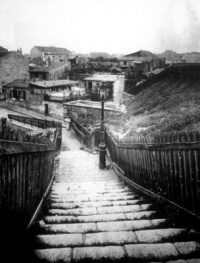City
From The Art and Popular Culture Encyclopedia
| Revision as of 18:28, 4 October 2022 Jahsonic (Talk | contribs) ← Previous diff |
Revision as of 20:49, 26 October 2022 Jahsonic (Talk | contribs) Next diff → |
||
| Line 13: | Line 13: | ||
| If this wiki were a [[city]], it would feature prominently [[nightclub]]s, [[record store]]s, a [[red light district]]s, [[museum]]s, [[library|libraries]], [[second hand book]] stores and [[Comic book|comic]] shops.]] | If this wiki were a [[city]], it would feature prominently [[nightclub]]s, [[record store]]s, a [[red light district]]s, [[museum]]s, [[library|libraries]], [[second hand book]] stores and [[Comic book|comic]] shops.]] | ||
| {{Template}} | {{Template}} | ||
| - | A '''city''' is an urban settlement with a particularly important status which differentiates it from a town. | ||
| - | City is primarily used to designate an urban settlement with a large population. However, city may also indicate a special administrative, legal, or historical status. | + | An '''urban area''' is an area with an increased [[Population density|density]] of human-created structures in comparison to the areas surrounding it. Urban areas may be [[city|cities]], [[town]]s or [[conurbation]]s, but the term is not commonly extended to [[rural]] settlements such as [[village]]s and [[hamlet (place)|hamlets]]. |
| + | |||
| + | Urban areas are created and further developed by the process of [[urbanization]]. Measuring the extent of an urban area helps in analyzing [[population density]] and [[urban sprawl]], and in determining urban and rural populations (Cubillas 2007). | ||
| + | |||
| + | Unlike an urban area, a [[metropolitan area]] includes not only the urban area, but also [[satellite city|satellite]] cities plus intervening [[rural]] land that is socio-economically connected to the urban core city, typically by [[employment]] ties through [[commuting]], with the urban core city being the primary labor market. In fact, urbanized areas agglomerate and grow as the core population/economic activity center within a larger metropolitan area or envelope. | ||
| + | |||
| + | Metropolitan areas tend to be defined using counties or county sized political units as building blocks. Counties tend to be stable political boundaries; economists prefer to work with economic and social statistics based on metropolitan areas. Urbanized areas are a more relevant statistic for determining per capita land usage and densities (Dumlao & Felizmenio 1976). | ||
| + | |||
| == Birth of cities == | == Birth of cities == | ||
| + | A '''city''' is an urban settlement with a particularly important status which differentiates it from a town. | ||
| + | |||
| For [[Paul Virilio]], the transition from [[feudalism]] to [[capitalism]] was driven not primarily by the politics of wealth and production techniques but by the [[mechanics of war]]. Virilio argues that the traditional feudal [[fortified]] city disappeared because of the increasing sophistication of weapons and possibilities for warfare. For Virilio, the concept of [[siege]] warfare became rather a war of movement. In ''[[Speed and Politics]]'', he argues that 'history progresses at the speed of its weapons systems'. | For [[Paul Virilio]], the transition from [[feudalism]] to [[capitalism]] was driven not primarily by the politics of wealth and production techniques but by the [[mechanics of war]]. Virilio argues that the traditional feudal [[fortified]] city disappeared because of the increasing sophistication of weapons and possibilities for warfare. For Virilio, the concept of [[siege]] warfare became rather a war of movement. In ''[[Speed and Politics]]'', he argues that 'history progresses at the speed of its weapons systems'. | ||
| == See also == | == See also == | ||
Revision as of 20:49, 26 October 2022
|
"Fex urbis lex orbis"--Les Misérables (1862) by Victor Hugo |
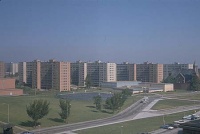
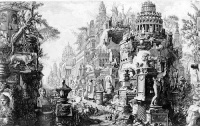
If this wiki were a city, it would feature prominently nightclubs, record stores, a red light districts, museums, libraries, second hand book stores and comic shops.
|
Related e |
|
Featured: |
An urban area is an area with an increased density of human-created structures in comparison to the areas surrounding it. Urban areas may be cities, towns or conurbations, but the term is not commonly extended to rural settlements such as villages and hamlets.
Urban areas are created and further developed by the process of urbanization. Measuring the extent of an urban area helps in analyzing population density and urban sprawl, and in determining urban and rural populations (Cubillas 2007).
Unlike an urban area, a metropolitan area includes not only the urban area, but also satellite cities plus intervening rural land that is socio-economically connected to the urban core city, typically by employment ties through commuting, with the urban core city being the primary labor market. In fact, urbanized areas agglomerate and grow as the core population/economic activity center within a larger metropolitan area or envelope.
Metropolitan areas tend to be defined using counties or county sized political units as building blocks. Counties tend to be stable political boundaries; economists prefer to work with economic and social statistics based on metropolitan areas. Urbanized areas are a more relevant statistic for determining per capita land usage and densities (Dumlao & Felizmenio 1976).
Birth of cities
A city is an urban settlement with a particularly important status which differentiates it from a town.
For Paul Virilio, the transition from feudalism to capitalism was driven not primarily by the politics of wealth and production techniques but by the mechanics of war. Virilio argues that the traditional feudal fortified city disappeared because of the increasing sophistication of weapons and possibilities for warfare. For Virilio, the concept of siege warfare became rather a war of movement. In Speed and Politics, he argues that 'history progresses at the speed of its weapons systems'.
See also
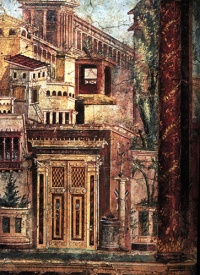
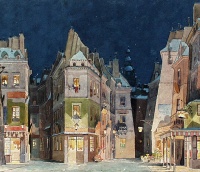
.jpg)
